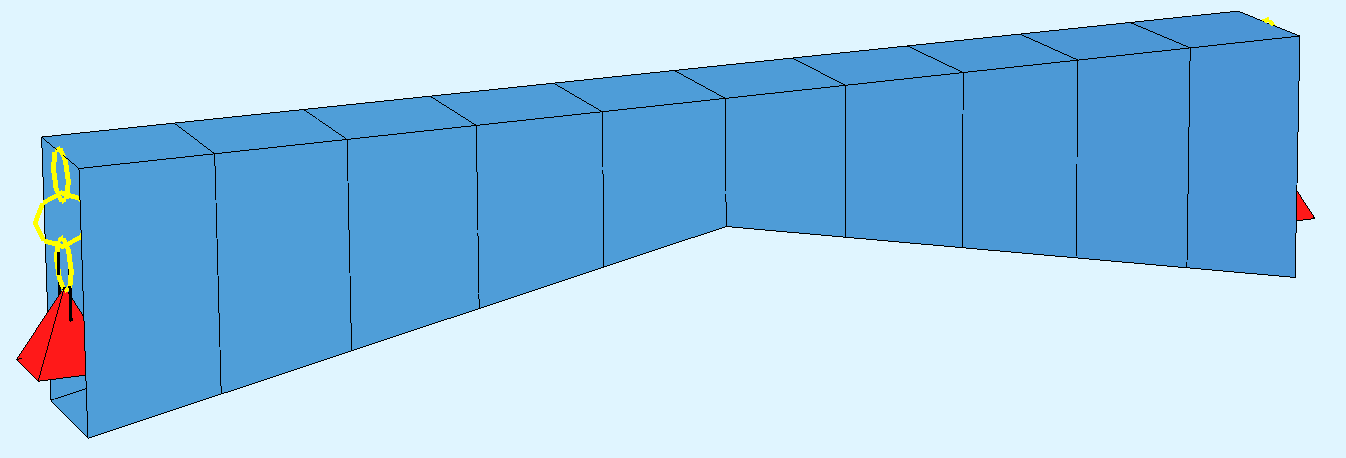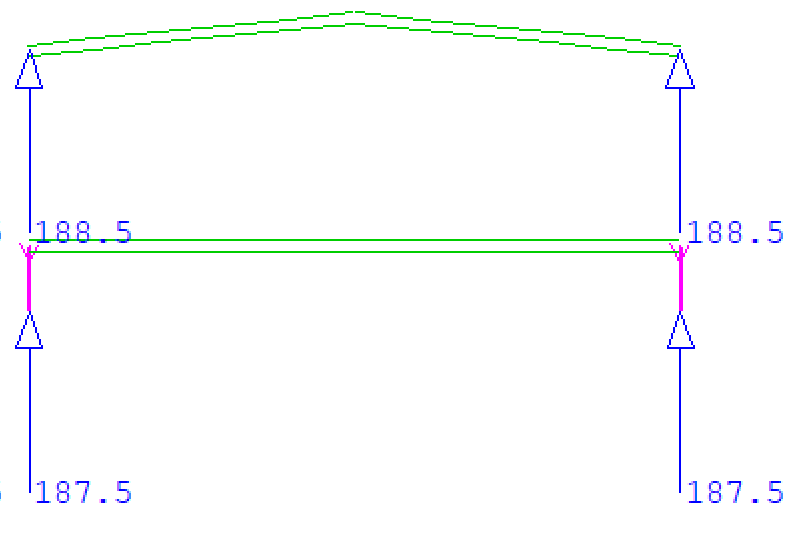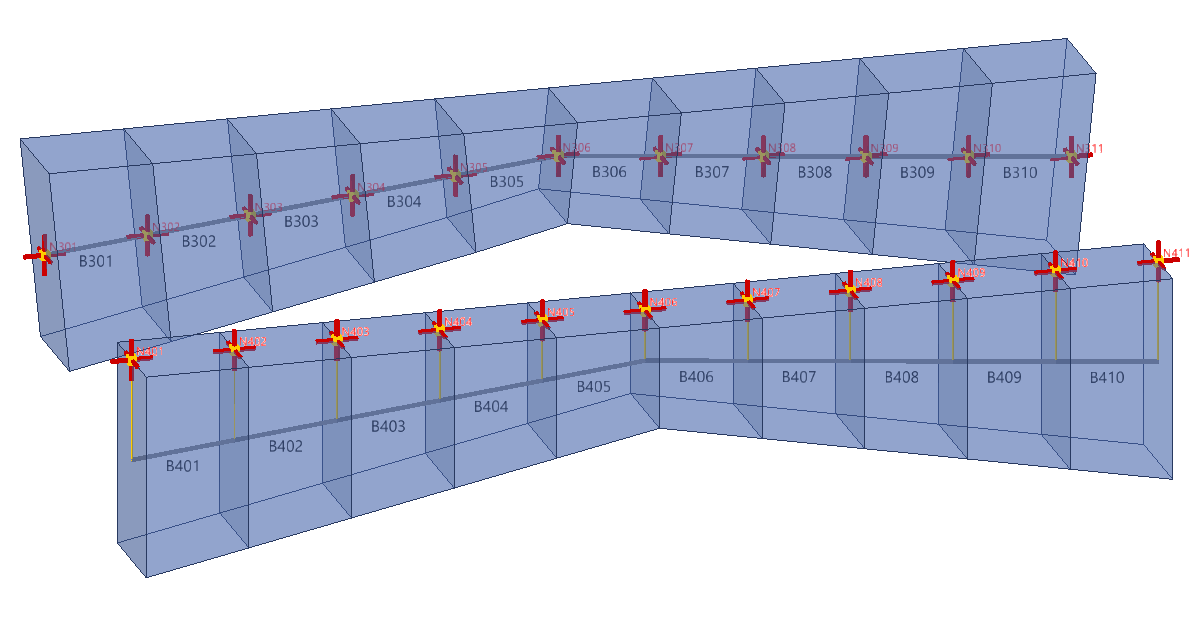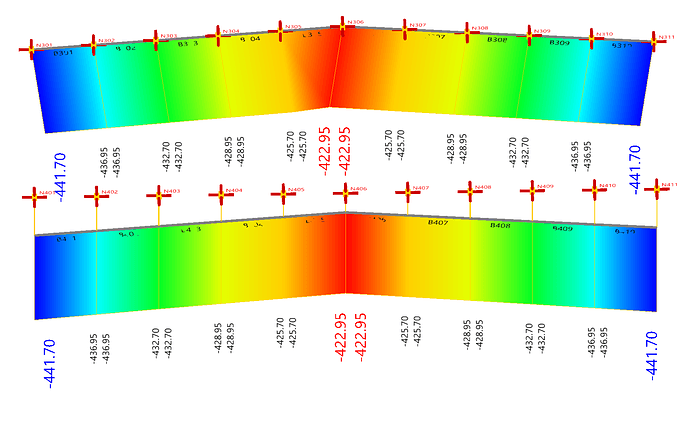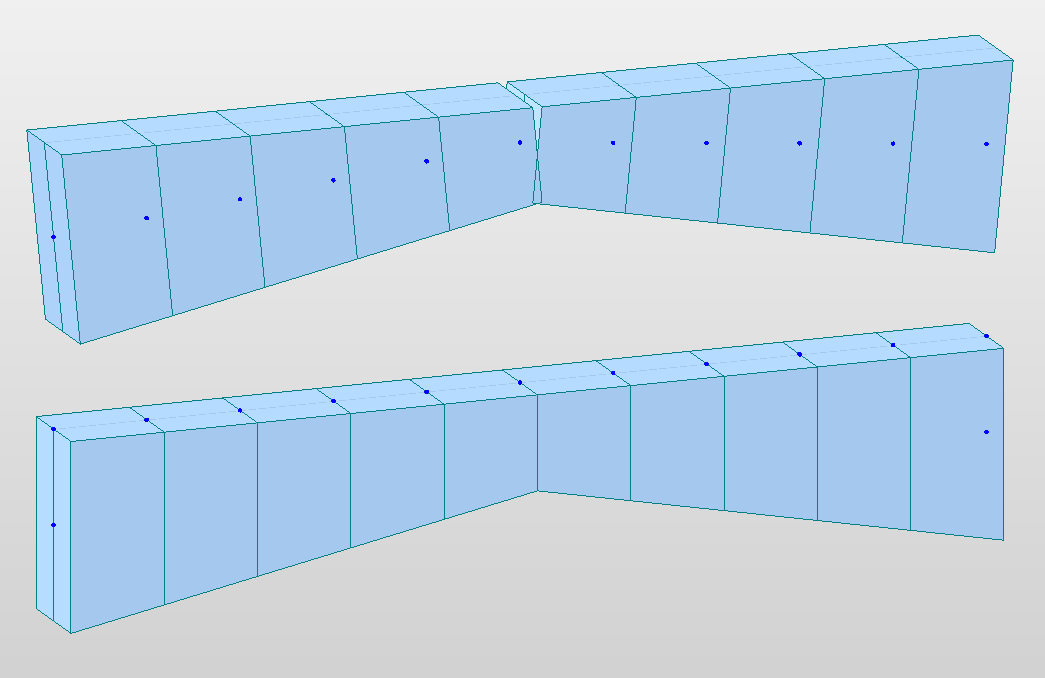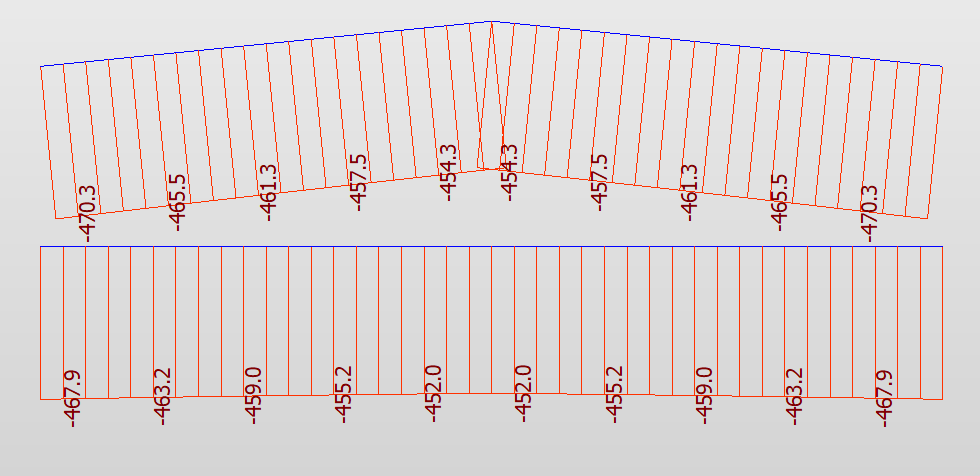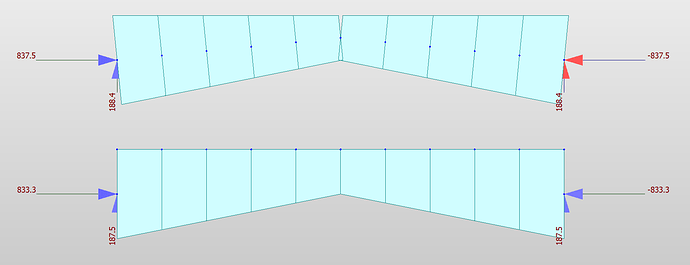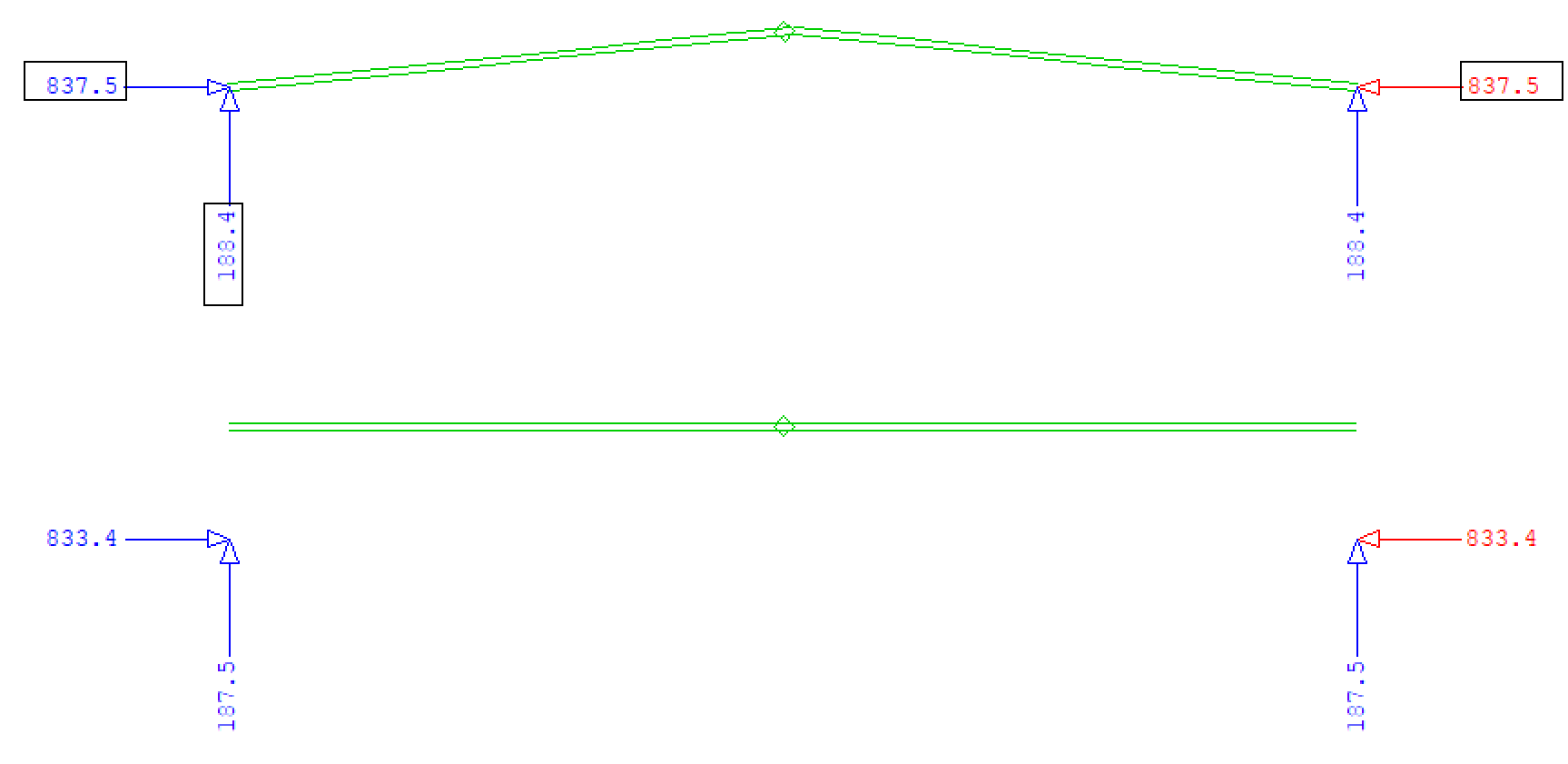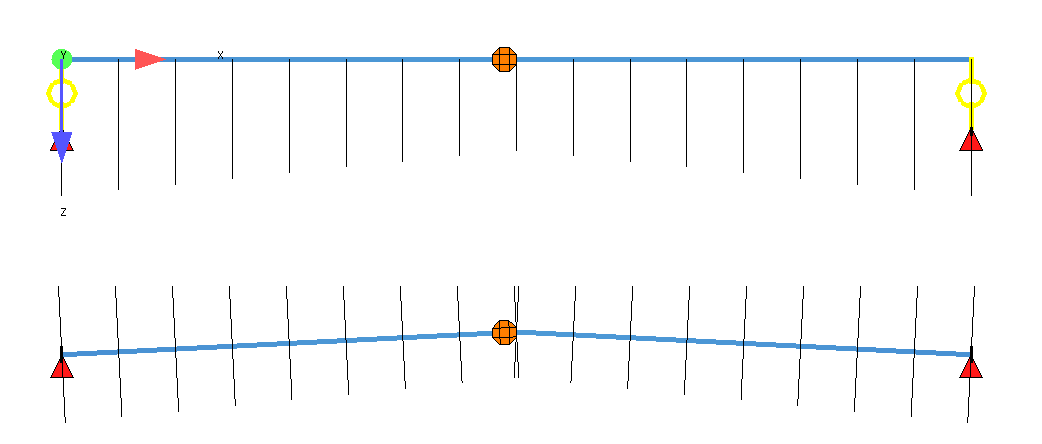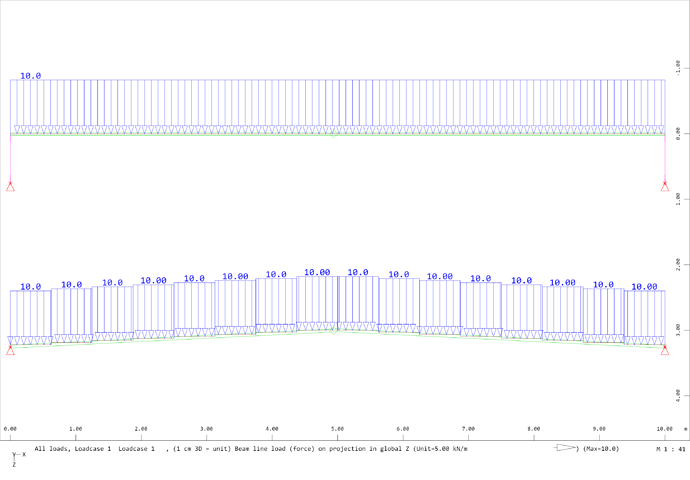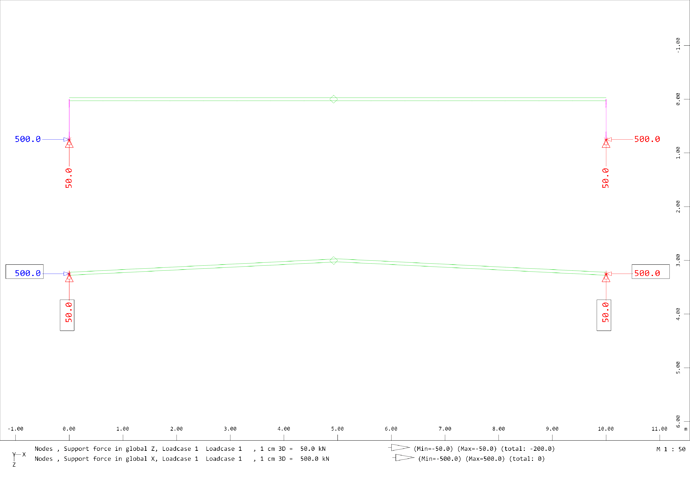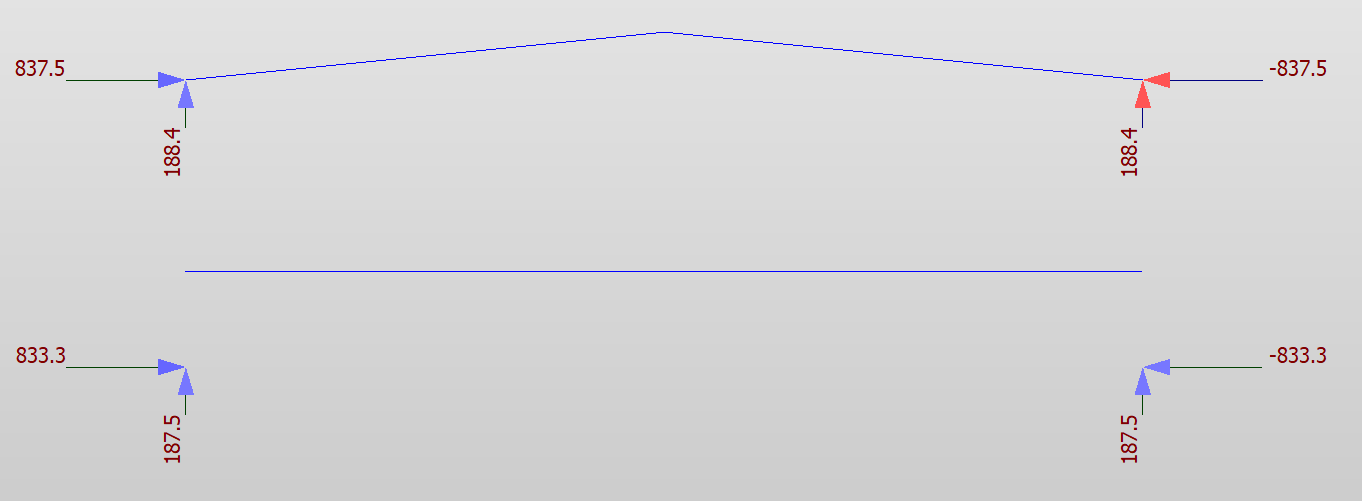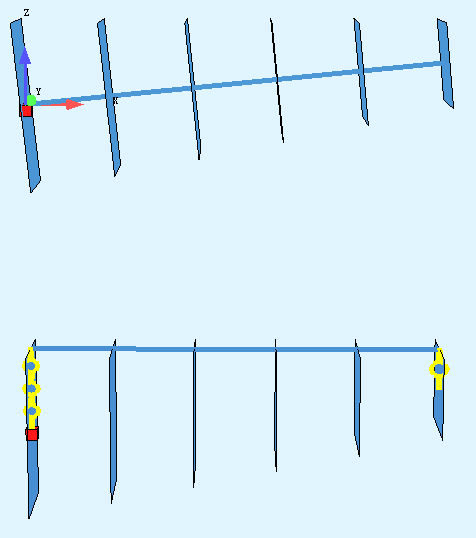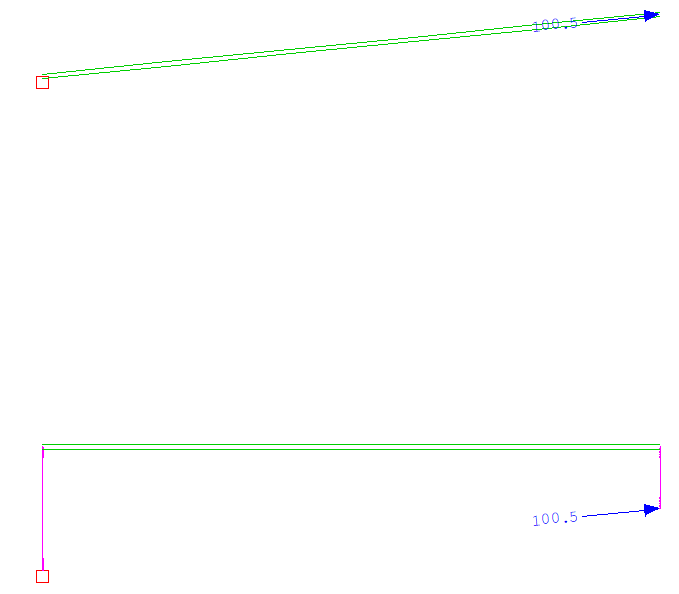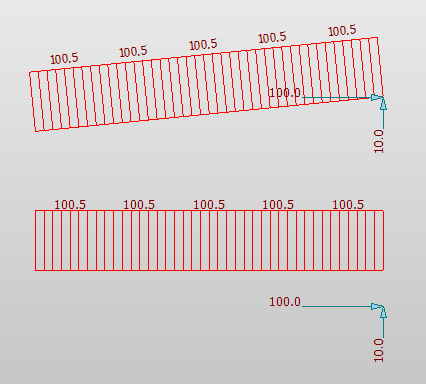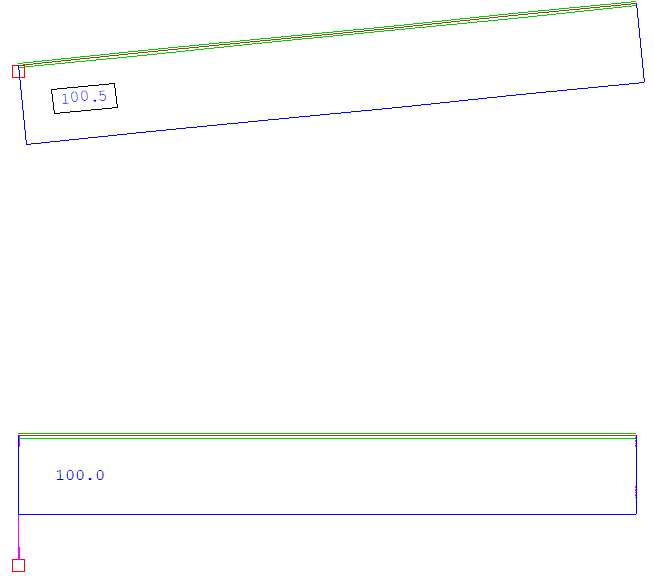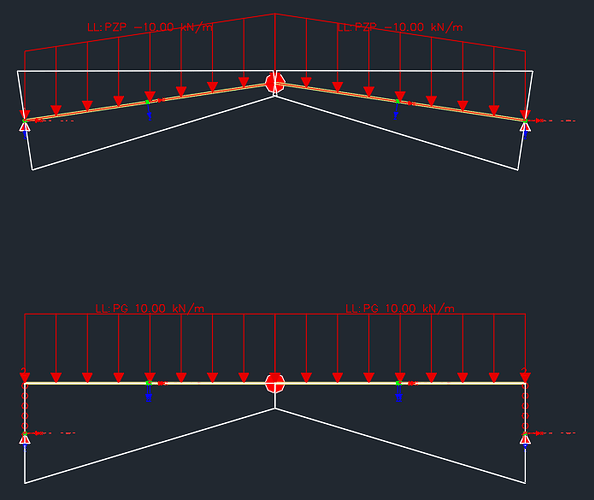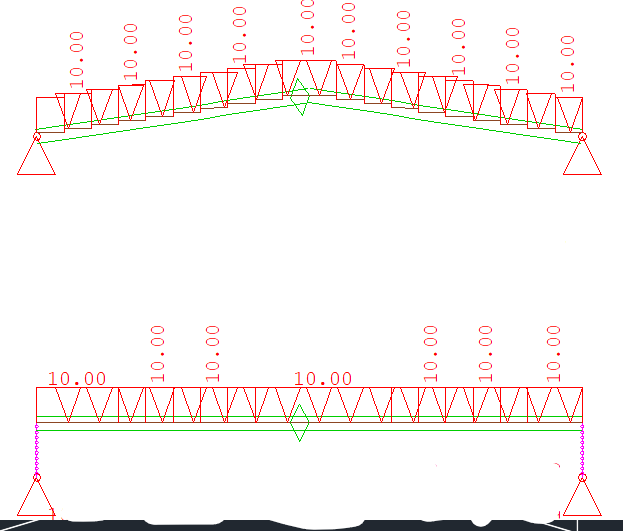Generally, the beam nodal line (NL) and line of gravity center (CGL) of each section will be the same, if eccentricity is not used for cross section.
If the eccentricity is uded for cross section, the NL and CGL will be different.
E.g.
I have an 10m arch-like structure, the end section is 1m (B) x 2m (H) rectangle, while the mid section is 1m (B) x 1m (H) rectangle. The top of the beam is aligned.
I use two different approach to model the structure:
- The nodes are the same as gravity center of each section, I call it CGL Arch.
- The nodes are on the top-center of beam, I call it NL Arch. (It looks like a beam, but it behaves like an arch)
CGL Arch
NL Arch
The supports are the same for both arches, they are on the gravity center of end sections.
These are the reactions for both arches under self weight.
These are the axial forces for both arches under self weight.
You can see that the axial forces are DIFFERENT.
The slope of CGL of the arch is 0.5/5=0.1, angle=atan(0.1)=5.71deg
For CGL Arch, N=188.5sin(5.71)+454.1cos(5.71)=471kN = 470.6kN from Sofstik
For NL Arch, N=187.5sin(0)+447.5cos(0)=447.5kN = 447.5kN from Sofstik
Obvioulsy, Sofistik use NL, not the CGL to interpret internal forces, which is MISLEADING.
Other softwares, like RM Bridge (TDV), Midas Civil, use CGL to interpret internal forces.
RM Bridge:
The top dirgram is the axial force in CGL Arch, the bottom dirgram is the axial force in NL Arch, they are the same.
Midas Civil:
The top dirgram is the axial force in CGL Arch, the bottom dirgram is the axial force in NL Arch, they are almost the same.


